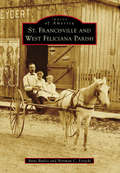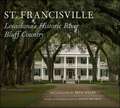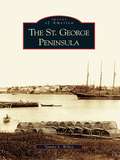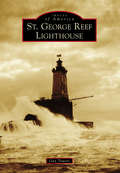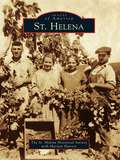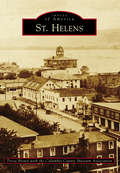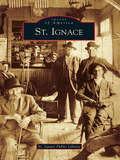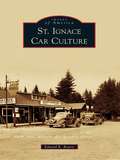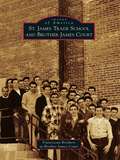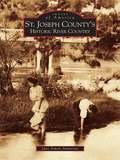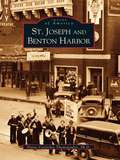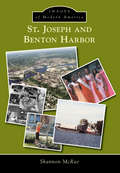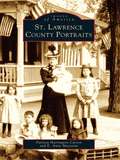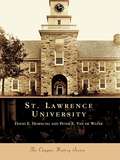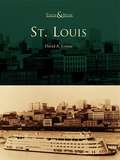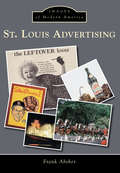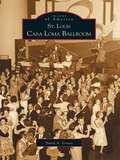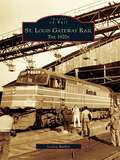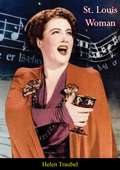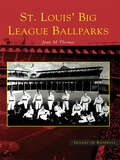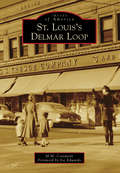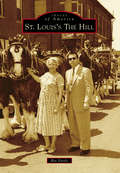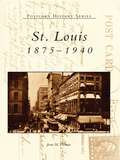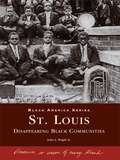- Table View
- List View
St. Francisville and West Feliciana Parish
by Anne Butler Norman FerachiSituated where the rugged Tunica Hills skirt the Mississippi River, St. Francisville began as part of Spanish West Florida in the early 1800s. The first settlers were adventurous Anglos who rebelled against Spain, established a short-lived independent republic, stopped the Civil War to bury a Union officer, and planted vast acres of indigo, cotton, and cane. In the 1900s, St. Francisville became the cultural and commercial center of the surrounding plantation country. Today, overlooking the river from atop a high, narrow ridge "two miles long and two yards wide," it remains the West Feliciana parish seat. Tourists visit its picturesque downtown, a lively Main Street Community and National Register Historic District. Antebellum plantations and gardens draw tourists year-round, and the unique hilly terrain provides unsurpassed recreational opportunities for hiking, bicycling, birding, hunting, and nature studies. Ever since John James Audubon painted dozens of his birds in West Feliciana in 1821, artists, writers, and other visitors have found inspiration in this scenic, unspoiled spot.
St. Francisville: Louisiana’s Historic River Bluff Country
by Danny Heitman Bevil KnappIn the rolling hills of Louisiana's Felicianas, less than an hour north of Baton Rouge on the east bank of the Mississippi River, lies the historic community of St. Francisville. For generations, this picturesque town has inspired a variety of creative artists, from naturalist John James Audubon, whose experiences in the area helped make him the world's greatest bird artist, to acclaimed novelist Katherine Anne Porter, who wrote one of her best travelogues, "Audubon's Happy Land," in 1939 after a visit to St. Francisville. Award-winning photographer Bevil Knapp embraces this lively tradition by lending her own perspective on a region Audubon once praised as an expression of "the greatness of the Creator in all his unrivaled works."Vividly evoking St. Francisville's fabled past as plantation country, Knapp offers stunning views of the stately historic homes that draw thousands of tourists annually -- including Oakley, Live Oak, Rosebank, Rosedown, and The Myrtles, among many others. But Knapp's images are more than mere architectural studies; they artfully invite the viewer to ponder who lived behind the windows of these historic homes -- and who might live there still. Knapp also captures the area's unmatched natural bounty, documenting the woods, waterways, and wildlife of a region that, in many ways, has remained unchanged for centuries. In addition to honoring St. Francisville's strong links to the past, Knapp's photographs reveal the town's continuing vitality as a respite from urban life. St. Ferdinand Street, a vibrant collage of small-town southern life; Afton Villa Baptist Church, a thriving African American congregation founded in 1871; Tunica Hills, a popular hiking destination named for the Tunica Indians who lived in the area for centuries; the nearby Port Hudson Civil War battlefield, site of thrilling annual reenactments -- all reveal their singular charm through Knapp's knowing lens. In an introductory essay, acclaimed journalist and author Danny Heitman offers a poetic counterpoint to Knapp's imagery, reflecting on photographs that, for all their historical resonance, "hum with the immediacy of news."Ultimately, Knapp's images transcend time, illuminating a flourishing community of unrivaled natural and historical beauty. A cherished memento for locals and visitors alike, St. Francisville summons readers to discover the rich treasures of this wondrous region for themselves.
St. George Peninsula, The
by Tammy L. WilleyThis fascinating history captures more than two centuries of life on and around the St. George Peninsula. These images feature war heroes, churches, community volunteers, historic sites, summer visitors, sailing vessels, and all phases of the still important fishing industry. St. George's rich cultural heritage is well documented due to the booming granite industry, which lured European laborers to this area in the early 20th century. Many of these quarryworkers remained. They put down roots and constructed stores, post offices, schools, and clusters of wood-framed dwellings. The stark walls of abandoned granite quarries still pay tribute to these hardworking immigrants. Today, this area is the gateway to Monhegan Island. It inspires theexceptional Wyeth paintings and is a magnet for other noted artists and photographers. Locals, however, still cling to the traditions of their small seaside town.
St. George Reef Lighthouse
by Guy TowersSituated at the end of a reef six miles offshore of Crescent City, California, stands St. George Reef Lighthouse. Constructed after the wreck of the coastal steamer Brother Jonathan in 1865, the beacon warned mariners of the dreaded "Dragon Rocks" of St. George Reef for nearly a century. This book chronicles the loss of the Jonathan, decades of efforts to make the light a reality, the 10-year construction period, manning of the station by keepers of the US Lighthouse Service and Coast Guard, and the struggles and accomplishments of dedicated volunteers to restore what many lighthouse historians refer to as "America's greatest lighthouse."
St. Helena
by The St. Helena Historical Society with Mariam HansThe town of St. Helena lies in the heart of Napa Valley, America's celebrated wine-producing region located 63 miles north of San Francisco. In 1854, Henry Still and a Mr. Walters purchased 126 acres from the Mexican land grant of Dr. Edward Bale. They offered free lots to anyone who would start a business there, having the foresight to predict a flourishing town in this verdant agricultural area. Premium wine grapes were planted here by the 1870s, and a thriving wine industry began. There are two theories about how the town got its name: either from the local division of the Sons of Temperance or from Mount St. Helena at the northern end of the valley. As the town developed, its residents, along with those from nearby Oakville, Rutherford, Angwin, and Pope Valley, shopped at its stores, attended its churches and schools, tended its fields, and made merry at numerous gatherings. This book captures these activities in photographs dating from 1880 to 1960.
St. Helens (Images of America)
by Tricia Brown Columbia County Museum AssociationRight from its start in 1847, this little town along the Columbia River was built with calloused hands. In these pages, one will see the loggers, shipbuilders, quarrymen, and mill workers. Their wives, mothers, and children are here, too, softening the edges and nourishing a community in the woods. Those early settlers built St. Helens to last, and through decades of booms and busts, tragedies and triumphs, the people's love for this place, so rich in beauty and possibility, shows in more than 200 images. It is a record of endurance, yes, but also of hope.
St. Ignace
by St. Ignace Public LibraryEven before it was named in 1671, St. Ignace was a key part of Michigan history. Before Fr. Jacques Marquette and the Jesuits arrived in the Straits of Mackinac, St. Ignace had a large Native American settlement. With the arrival of the French, fur trading became an important industry. St. Ignace became the county seat in 1882. By the mid-1800s, fishing, shipping, manufacturing, and lumbering were a crucial part of St. Ignace activity. As these industries died down, tourism increased. The area was appealing to tourists for its natural beauty and its fresh air; many came for relief from hay fever and asthma. Initially travelers arrived by ship and train. Ferryboats were important in transporting visitors and goods because of the primitive road system. With its natural harbor, St. Ignace was within easy reach of other Great Lakes ports. With the completion of the Mackinac Bridge in 1957, travel to St. Ignace became much easier. St. Ignace is often referred to as the "Gateway to the Upper Peninsula."
St. Ignace Car Culture (Images of America)
by Ed ReavieSt. Ignace hosted its first car show in 1976 as part of the bicentennial celebration. Over the years, the annual gathering has grown into one of the largest collector-vehicle events in the country. This lakeside community overlooking the mighty Mackinac Bridge and historic Mackinac Island boasts a spectacular waterfront--the perfect backdrop for a stunning array of eye-catching vehicles. In the early years, media referred to this show as "dessert." As the numbers of participants and attendees grew, it became known as the "main course." For teenagers growing up in the 1950s it was all new--cruisin', drive-ins, drag strips, the country's intense love affair with the automobile, and the birth of rock 'n roll. Over 34 years, the St. Ignace Car Show has brought hundreds of automotive legends to town, and car-show traffic set crossing records on the Mackinac Bridge that are unlikely ever to be broken. So fire up the hot rod and cruise back to a simpler time . . . all these cars and still no traffic light!
St. James Trade School and Brother James Court
by Franciscan Brothers at Brother James CourtHelping orphaned and disadvantaged boys get a chance at a better life was the mission of Brother James, founder of the Franciscan Brothers of the Holy Cross, a German Catholic Order that sent Brothers to the United States in 1924. To that end, St. James Trade School was established in Springfield, Illinois, in 1928. Two years later, the first group of apprentices was admitted; they and hundreds who followed them through 1972 went on to become certified mechanics, carpenters, and electricians among other valuable trades. High school diplomas were earned beginning in 1948. In 1975, Brother James Court (BJC) opened with a brand new building specifically designed as a residential intermediate care facility. BJC provides both residency and advocacy for developmentally disabled men. Providing the highest quality care, consistent with the spirit and principles of the Franciscan Brothers of the Holy Cross, programs at BJC meet residents' needs and allow them to live happily at BJC for as long as they need.
St. Joseph County's Historic River Country
by Jane Simon AmmesonRiver Country is the name given to St. Joseph County, Michigan, an area of historic small towns including Three Rivers, Mendon, Centreville, Constantine, Sturgis, and Nottawa. Home to one of the largest Amish populations in the state, it is a place of meandering roads often frequented by horse-driven black buggies. The county's towns, many of which are on the Michigan and National Registers of Historic Places, feature architecture that harkens back to the 1800s with styles ranging from Italianate and Greek Revival to Queen Anne and Colonial. This book chronicles River Country's historic development, with insight into the businesses, personalities, activities, and architecture that have contributed to its remarkable charm and character.
St. Joseph and Benton Harbor
by Elaine Cotsirilos ThomopoulosTwo distinct communities which share equally vibrant histories, the twin cities of St. Joseph and Benton Harbor possess a rich heritage rooted in agriculture, manufacturing, transportation, and tourism. Through more than 200 photographs, this book documents the cities' development from the time when pioneers first struggled to create a community in the wilderness. It pays tribute to the men and women who labored to establish farms and industries, and celebrates the delightful beaches and amusement parks-such as the House of David and Silver Beach-that have brought joy to generations of residents and visitors alike.
St. Joseph and Benton Harbor
by Shannon McraeSt. Joseph and Benton Harbor portrays twin cities with very different personalities weathering a time of great change. Long established as thriving centers of manufacturing, fruit farming, shipping, and tourism, both towns faced the enormous economic and cultural transformations of post-World War II America: rapid demographic shifts, urban renewal, social unrest, and the collapse of industrial manufacturing. Through hard work, creative effort, and above all community cooperation, each southwest Michigan town reinvented itself, emerging into the 21st century revitalized and transformed.
St. Lawrence County Portraits
by Patricia Harrington Carson E. Anne MazzottaSt. Lawrence County Portraits is a tribute to the citizens who shaped New York State's largest county. St. Lawrence is a county with many natural attributes: immense forests, navigable rivers, and vast tracts of fertile land. All of these have been instrumental in drawing people to the area. Reflected in St. Lawrence County Portraits are the influences of a strong mix of residents, including the Mohawks, who have called this area home for thousands of years, the European settlers, and those who trace their family history to Canada, just across the mighty St. Lawrence River.
St. Lawrence University (Campus History)
by David E. Hornung Peter E. Van De WaterFounded in 1856, St. Lawrence University is the oldest continuously coeducational institution of higher learning in New York State. Today, it offers a four-year undergraduate program of study in the liberal arts and enrolls approximately 2,000 students. St. Lawrence University looks back at a history that includes industry pioneers, government leaders, a law school, Madame Curie, the SS St. Lawrence Victory, movie stars, and sports legends. Originally chartered as a Universalist seminary and college of letters and science, St. Lawrence championed progressive ideas such as critical thinking and gender equality. The university of the late 19th century, although austere, offered nonacademic activities, including sports teams, a student government, the first Greek-letter organizations, and organizations for music, drama, social activism, and the literary arts. After weathering the Great Depression and World War II, the university grew dramatically; the four-building campus serving some 300 students in the early 1940s became a 30-building campus within 25 years.
St. Louis
by David A. LossosAs we approach the 241st anniversary of the settlement on the banks of the mighty Mississippi that came to be the metropolis of St. Louis, it is appropriate to look back at this great city. We have precious few physical reminders of the days of Laclede and Chouteau. It wasn't until the mid-19th century that we regularly recorded via photographs the development (and destruction) of the sights that make St. Louis unique. It is through these images that we have the marvelous capability to look back and view our city through the eyes of our predecessors: To see the things that were here decades ago and still look the same; to see things that no longer exist, and to see what we have replaced them with; to see what we have preserved, and what we have discarded; and to see the present via the images of the past. There is no way to encompass all the changes that this city has seen in one book. The views in this book will give the reader a representative selection of the more recognizable sights in the St. Louis metropolitan area. The intent is to include most of the major places and things that everyone identifies with St. Louis. But also included are more obscure photos that show scenes with which many of our ancestors would also identify. There will always be progress, but that which is lost is worth remembering. So sit back, relax, and take a stroll down the streets of St. Louis as our ancestors knew them.
St. Louis Advertising
by Frank AbsherMention "advertising," and just about everyone thinks of New York's Madison Avenue, long the center of the nation's advertising universe. The reality is that advertising is everywhere and has been almost since the inception of the nation. In St. Louis, for example, two early advertising agencies became major players on the national scene, creating advertising for multinational corporations. Browsing through this collection of old advertisements gives readers a chance to follow the development of the nation's business community over the past 200 years and see what was important in the daily lives of Americans, as well as what the nation's commercial interests wanted them to believe was important.
St. Louis Casa Loma Ballroom
by David A. LossosIn 1927, on the northeast corner of Cherokee and Iowa Streets in south St. Louis, a multistory, multipurpose building was erected. Retail shops and a bowling alley occupied the first floor, while upstairs was a place that defied the imagination of someone driving by in their brand new Model T Ford. Today, that upstairs space, with its lofty ceiling, huge maple tongue-in-groove dance floor, and wraparound balcony, is the Casa Loma Ballroom--St. Louis' last grand ballroom. Today, one gets the feeling that the ghosts of the big bands and the vocalists still linger there--and with good reason. Just about everybody who was anybody played there at one time or another. Ol' Blue Eyes himself, before he was the idol of millions, received just a meager "Featured Singer, Frank Sinatra" note at the bottom of the Casa Loma bill the night he played with the Harry James Orchestra.
St. Louis Gateway Rail: The 1970s
by Lesley BarkerThough the city of St. Louis is located on the Missouri side of the Mississippi River, for the railroads, the St. Louis Gateway extends into Illinois, north and south along both sides of the river. Two factors conspired against St. Louis's aspiration to become the preeminent rail center of the 19th-century American Midwest: there was no bridge across the Mississippi, and Missouri's loyalty to the Union during the Civil War was suspect. Chicago beat out St. Louis to attain the region's top railroad billing. Fast forward to the 1970s, when the Gateway Arch, dedicated in 1968, redefined the St. Louis riverfront and when the St. Louis Union Station closed to rail service. The 1970s was a decade of railroad debuts--Burlington Northern, Illinois Central Gulf, Family Lines--and a decade of railroad demises--Rock Island and Frisco. It signaled the end of a century of rail domination of the American transportation scene.
St. Louis Woman (Opera Biographies Ser.)
by Helen Traubel Richard G. HublerThis charming autobiography captures the life story of a fascinating woman: a Missouri girl-turned-world-class soprano who remained true to her roots through it all.Born and reared in St. Louis and proud of her origins, Helen Traubel grew up in a modest German-American family. She spent her teens and twenties singing with church choirs and quartets in the city, studying under first- rate teachers. She did not leave Missouri for New York until she was in her early thirties. Although she replaced the great Kirsten Flagstad at the Metropolitan Opera, she refused to confine herself to singing before elite crowds and prided herself on reaching a larger, more general audience via nightclubs, radio, television, and theater.St. Louis Woman is filled with candid and amusing stories as full of zest as Traubel herself. One such story details her audition for the Ford Hour, during which she suffered a terrible case of poison ivy, and the booth technicians interrupted her performance with laughter. Furious, she announced she would sing no more and started to leave. Without explanation, the technicians asked her to continue. Traubel later discovered that the higher-ups had called down to the technicians demanding they stop playing the Flagstad record and let that kid sing.The qualities that made Traubel such a notable individual are captured in this entertaining book. Her strong, independent character shines through. Outspoken and at times brutally honest, Traubel recounts her experiences at the Met, as both a popular performer and a teacher. She tells of exasperating moments when she was coaching famous pupil Margaret Truman. This is not a fact-laden examination of the singer’s Wagnerian repertory or a study of high opera; rather this engaging book introduces the reader to a nationally renowned performer who, despite her unmatched talent, retained her hometown identity and lived her life as a St. Louis woman.
St. Louis' Big League Ballparks (Images of Baseball)
by Joan M. ThomasBaseball came to St. Louis before the dawn of the major leagues. It was a gentleman's game, a simple summer pastime, and its popularity grew as the city evolved. Local amateur teams proliferated, and interest in forming a team of professionals resulted in two such St. Louis teams in 1875, the Brown Stockings and the Red Stockings. The Browns and Reds played their home games at separate parks, the Grand Avenue Grounds and Red Stockings Park. The first fully professional game of baseball held in St. Louis took place at the latter. Very few modern fans are aware of this, or of these parks' locations. Moreover, there was a time early in the twentieth century when St. Louis supported not just two, but three major league teams, each with its own ballpark. This book is intended as a keepsake of the stadiums and playing fields of St. Louis' baseball past.
St. Louis's Delmar Loop
by M. M. Costantin Joe EdwardsIn 1902, magazine publisher Edward Gardner Lewis needed greater space for his thriving business, then based in downtown St. Louis. He headed west, out Delmar Boulevard a mile past the city line, and bought five acres of open land adjacent to the loop in the trolley tracks that sent the 10D streetcar back downtown. By 1903, Lewis was building a complex that included the Woman's Magazine Building, a five-story octagonal tower with an eight-ton searchlight in its dome. In 1906, University City was incorporated, and Lewis became its first mayor, serving three terms. In 1913, Lewis went west again, this time to found the utopian colony of Atascadero, California. His octagonal dazzler is now University City's City Hall. In 2007, in its first such list, the American Planning Association named the Delmar Loop one of the country's "Great Streets"--it's a long story.
St. Louis's The Hill
by Rio VitaleThe Hill was named for its proximity to the highest point in St. Louis. Italians, mainly from Northern Italy, immigrated to the area starting in the late 1800s; however, by 1910, Sicilians were also immigrating to the Hill. Agencies in Italy were employed by mining companies and other industries to help Italian citizens gather all the required documentation for immigration. Italians came to the Hill because of its proximity to the factory and the mines and because it was a district that allowed them to purchase land and build a home. The Parish of St. Ambrose was founded 1903. After the original church was destroyed by fire, the new church was completed in 1926. The Hill has been home to some of St. Louis's nationally known residents, including baseball heroes Joe Garagiola and Lawrence "Yogi" Berra.
St. Louis: 1875-1940 (Postcard History)
by Joan M. ThomasThe "beautiful city" described by early 20th century picture postcard senders still exists. The vintage postcard images presented here take you on a tour of St. Louis' burgeoning days, where you will revisit the grand architecture and neighborhoods of the early part of the last century. See Union Station in its original incarnation as a train station. Witness the grandeur of the 1904 World's Fair held at forever beautiful Forest Park. Plus, savor the charm of the city's many other parks, such as Lafayette Park, the site where baseball was first introduced to St. Louis. You will visit the thoroughfares of downtown St. Louis before it became necessary to rebuild and renovate. Finally, visit favorite places like Soulard Market, which have thrived from the beginning, maintaining a connection between the past and the present.
St. Louis: Disappearing Black Communities (Black America Series)
by John A. Wright Sr.Since the founding of St. Louis, African Americans have lived in communities throughout the area. Although St. Louis' 1916 "Segregation of the Negro Ordinance" was ruled unconstitutional, African Americans were restricted to certain areas through real estate practices such as steering and red lining. Through legal efforts in the court cases of Shelley v. Kraemer in 1948, Jones v. Mayer in 1978, and others, more housing options became available and the population dispersed. Many of the communities began to decline, disappear, or experience urban renewal.
St. Mary's County
by Karen L. GrubberFor nearly four centuries, St. Mary's County has been called "the land of pleasant living." The county's fertile fields and pristine waters invite visitors and natives alike to revel, relax, and renew. As the "Mother County" of Maryland, St. Mary's has a rich written history dating from 1634, when George and Leonard Calvert established the first American settlement founded on the principle of religious tolerance. After surviving British raids during the War of 1812 and divided loyalties in the Civil War, the county leapt into the modern era when the US Navy established Naval Air Station Patuxent River, the Navy's premier flight test center and test pilot school. Today, millions of Americans trace their roots to Southern Maryland and are welcomed home as "Sons and Daughters of Old St. Mary's."
